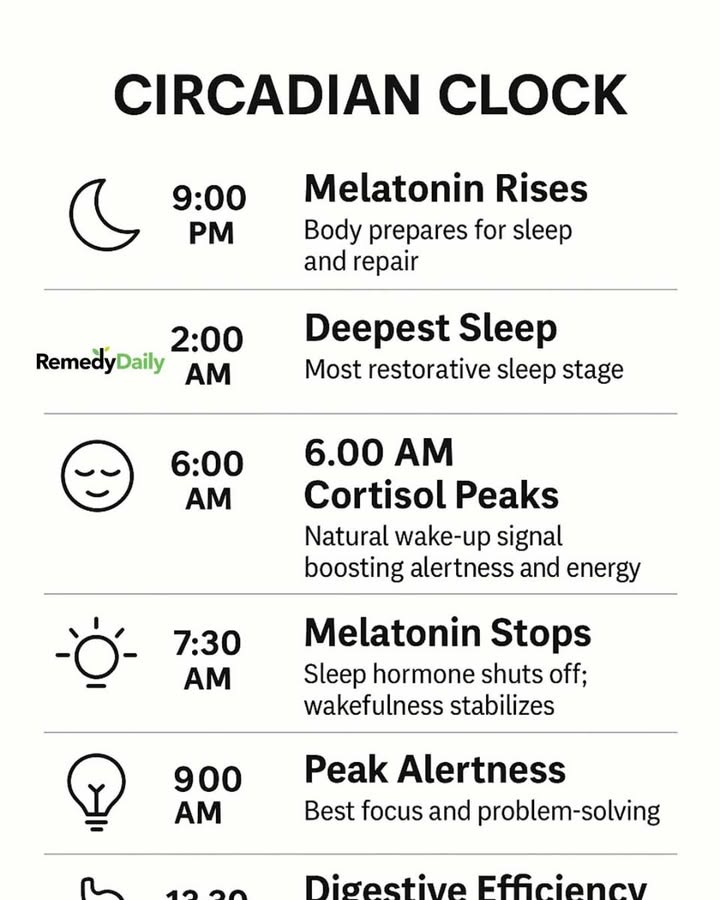
Timeline of how your circadian clock works &why
9:00 PM – Melatonin Rises
As darkness falls, melatonin begins to rise again, signaling to the body that it’s time to prepare for rest. This is when the body shifts focus toward repair and recovery. Consistent exposure to artificial light, especially blue light from screens, can delay this process and disrupt sleep quality.
Creating a calming nighttime routine—dimming lights, reading, or gentle stretching—can encourage melatonin production and help you fall asleep more easily. This ritual trains your body to associate evening with rest.
2:00 AM – Deepest Sleep
In the middle of the night, the body enters its deepest stage of sleep, known as slow-wave sleep. This is when physical restoration occurs—tissue repair, immune system strengthening, and energy replenishment. It’s also crucial for consolidating memories and learning.
Interruptions during this phase can leave you feeling groggy and unrested, even if you’ve slept for a long duration. Ensuring your sleep environment is dark, cool, and quiet maximizes this restorative stage.
Resources